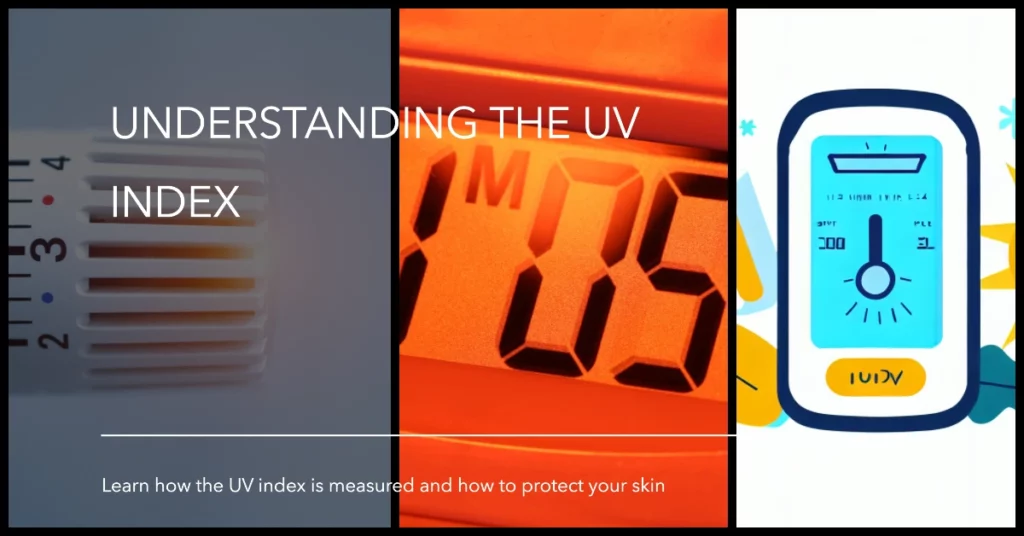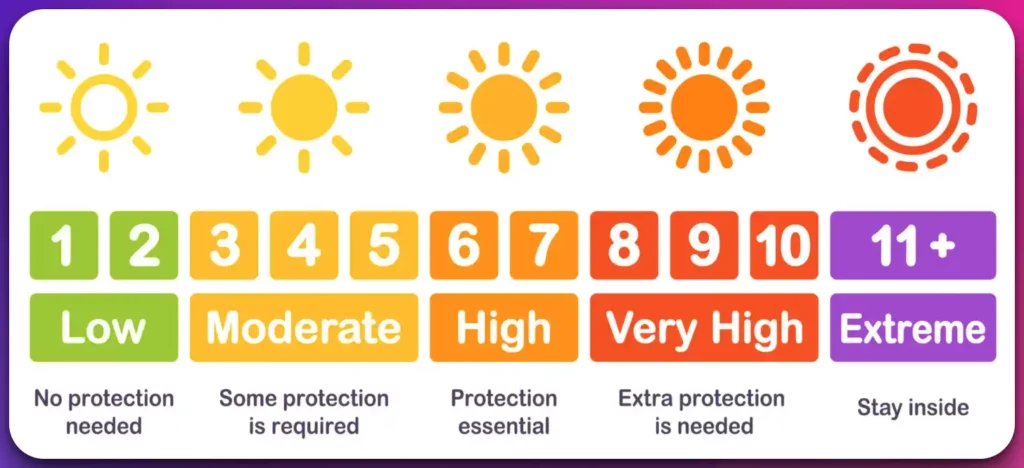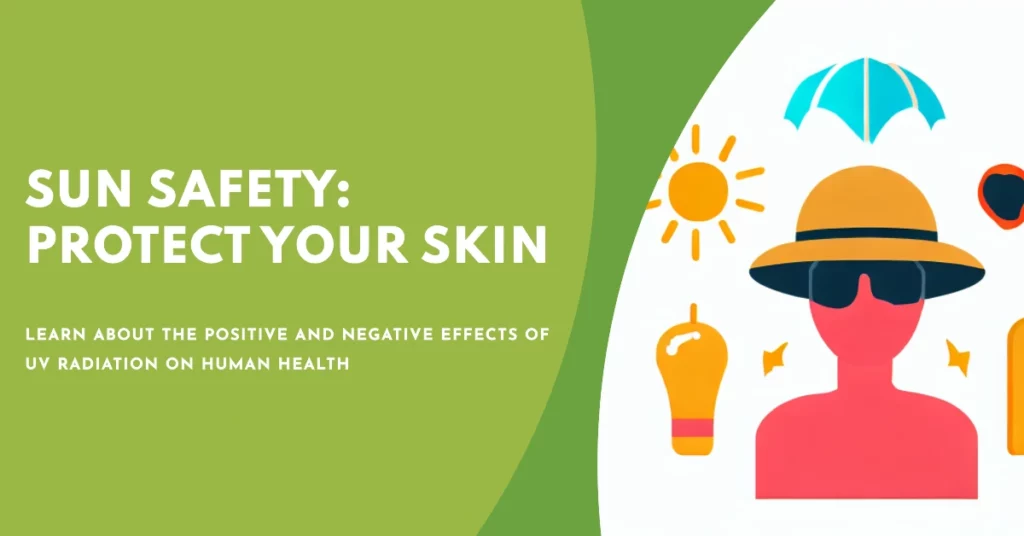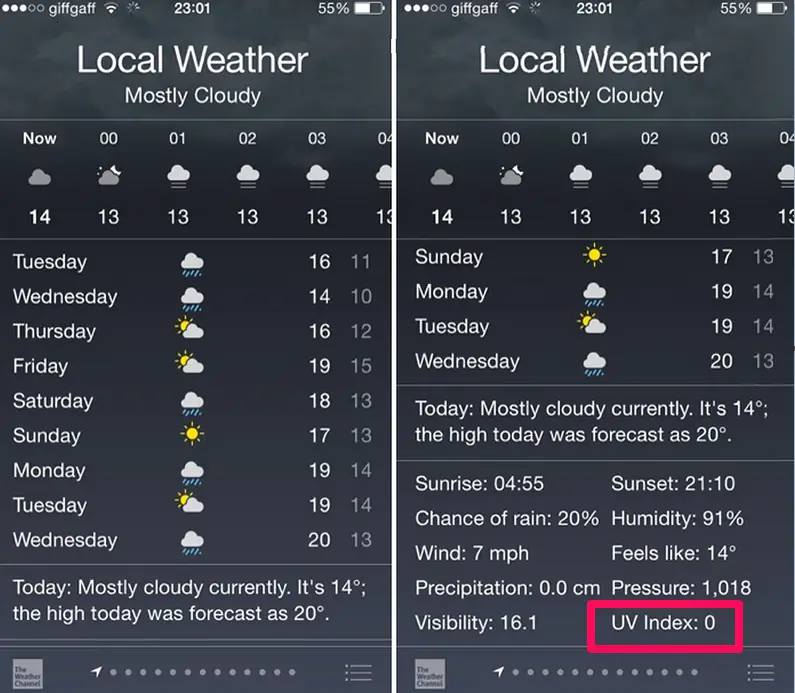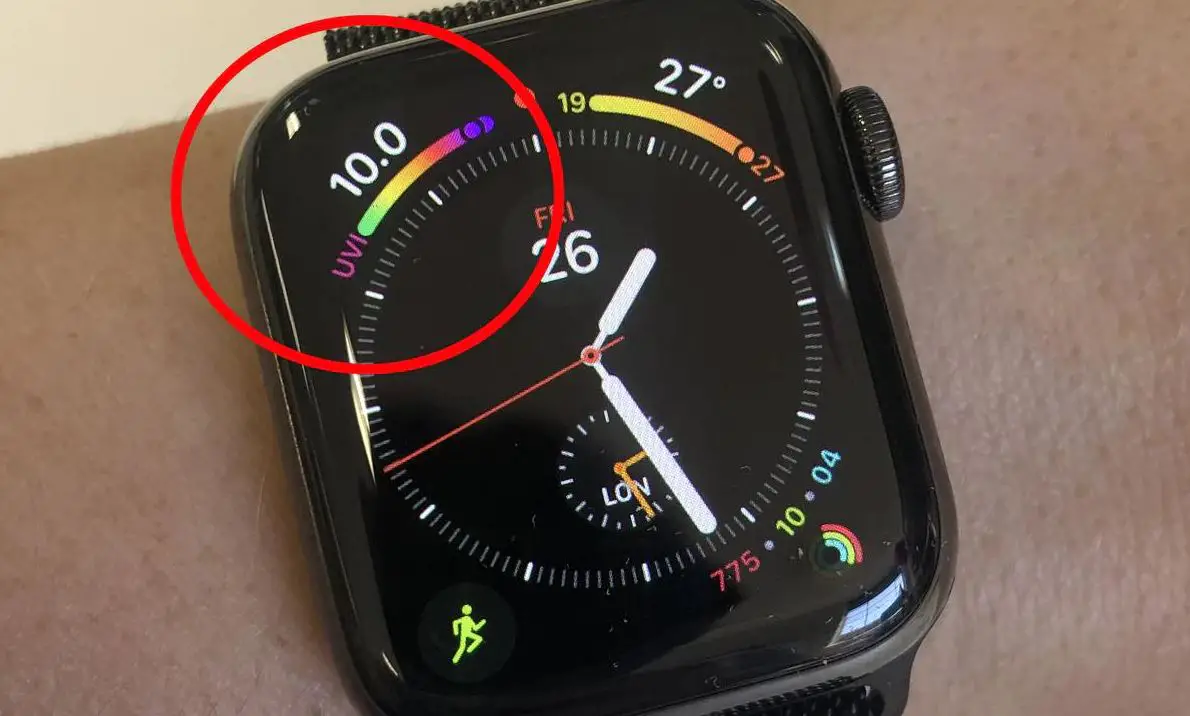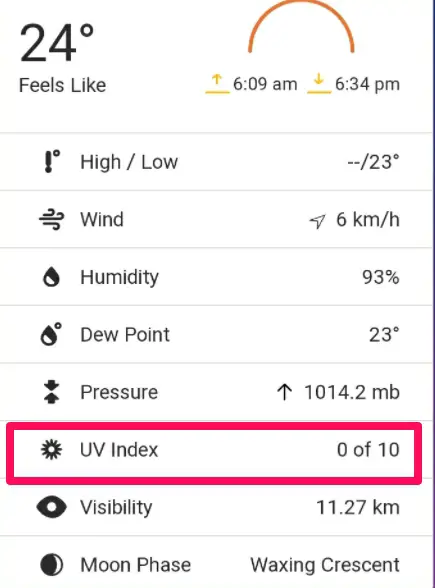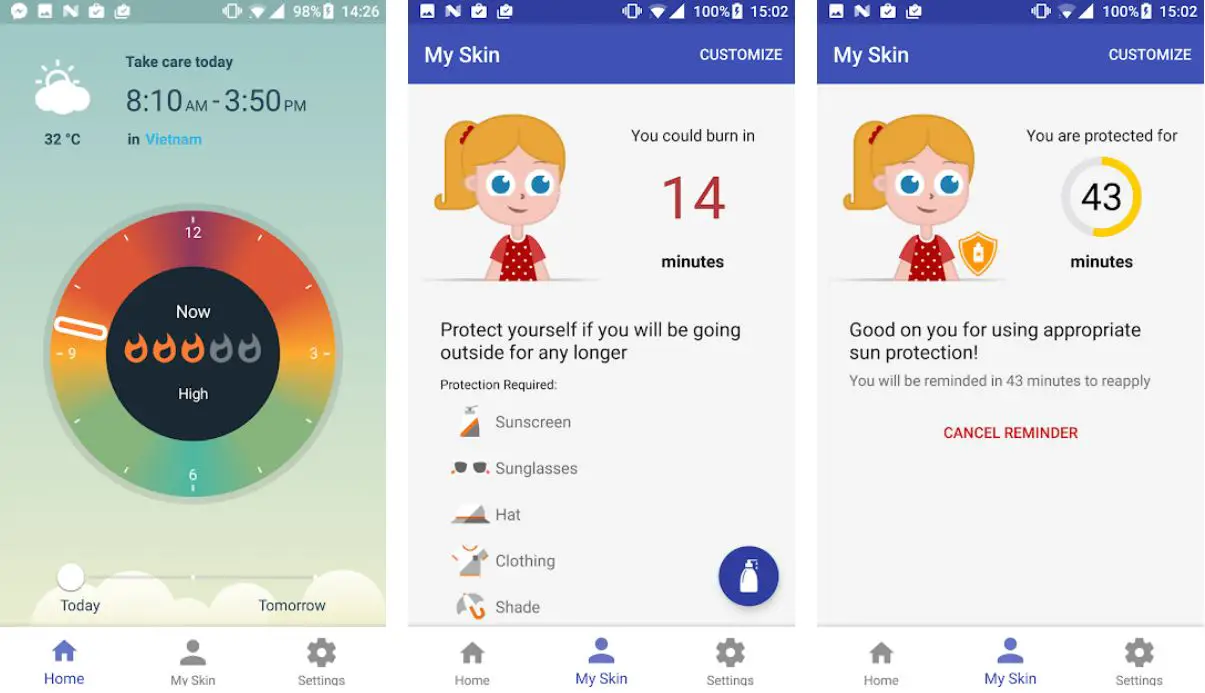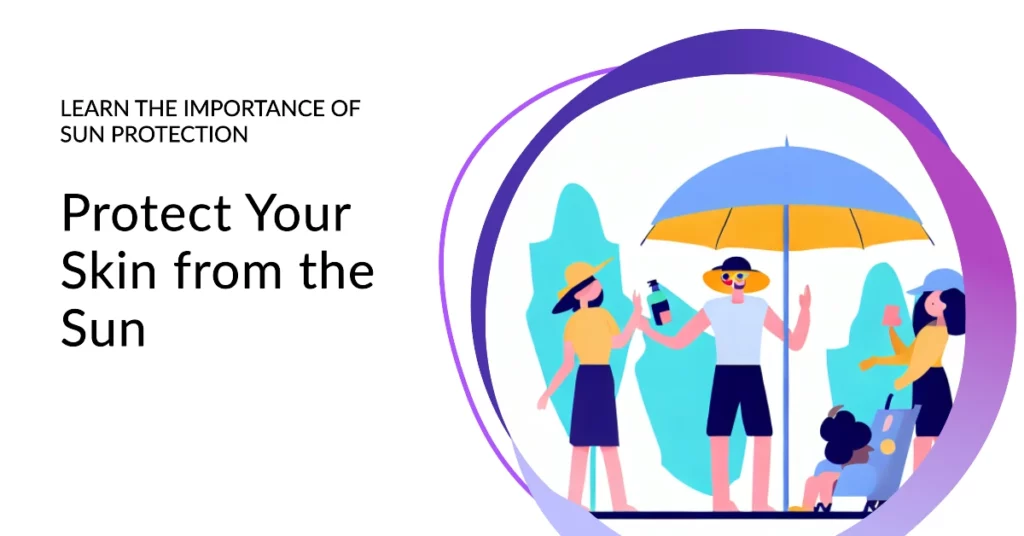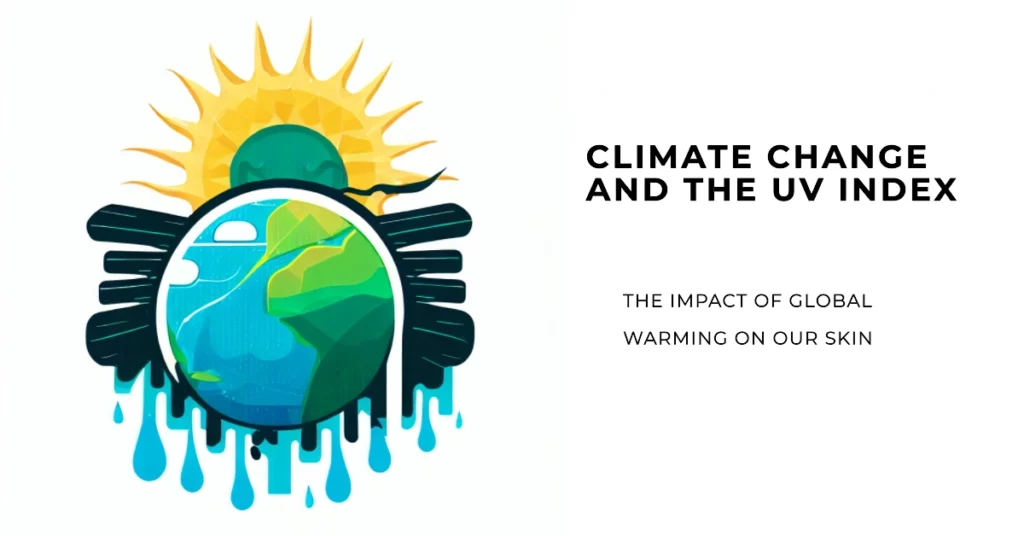Are you aware that something as enjoyable as spending a day under the sun can silently cause harm to your skin and overall health?
While an invisible threat, ultraviolet (UV) radiation poses real risks, particularly when left unchecked. This is the Problem we face – the hidden hazards of UV radiation.
Did you know that excessive UV radiation can lead to skin damage, eye damage, and, in severe cases, skin cancer? It’s not just about the unsightly sunburns. Prolonged and unprotected exposure to sunlight can lead to wrinkles, sunspots, cataracts, and even malignant melanomas.
Imagine missing out on the simple joys of life – like playing with your kids in the park or enjoying a beach vacation – because of fear of the harmful effects of the sun.
This is where understanding the UV Index becomes crucial. It’s a tool that can help you gauge the level of UV radiation at any given time or place, enabling you to make informed decisions about sun protection.
Armed with the knowledge of the UV Index, you’ll be better prepared to safeguard your skin and health while still enjoying the outdoors.
This article helps you decipher the UV Index, understand its importance, and learn practical tips to use it effectively in your daily life.
What is UV Index?
The UV Index is a crucial measurement used to assess the intensity of ultraviolet (UV) radiation from the sun at a particular location and time. Promoting public awareness about the potential risks associated with sun exposure and aiding in sun protection measures is essential.
UV radiation is electromagnetic radiation emitted by the sun that reaches the Earth’s surface. It consists of three types: UVA, UVB, and UVC. While UVC is absorbed by the Earth’s atmosphere, UVA and UVB rays penetrate the atmosphere and can adversely affect human health.
The UV Index provides a numerical scale, typically ranging from 0 to 11 or higher, indicating the level of UV radiation exposure. The higher the index value, the greater the potential risk to our skin and eyes.
Excessive UV radiation can lead to harmful effects, such as sunburn, premature skin aging, eye damage, and an increased risk of skin cancer.
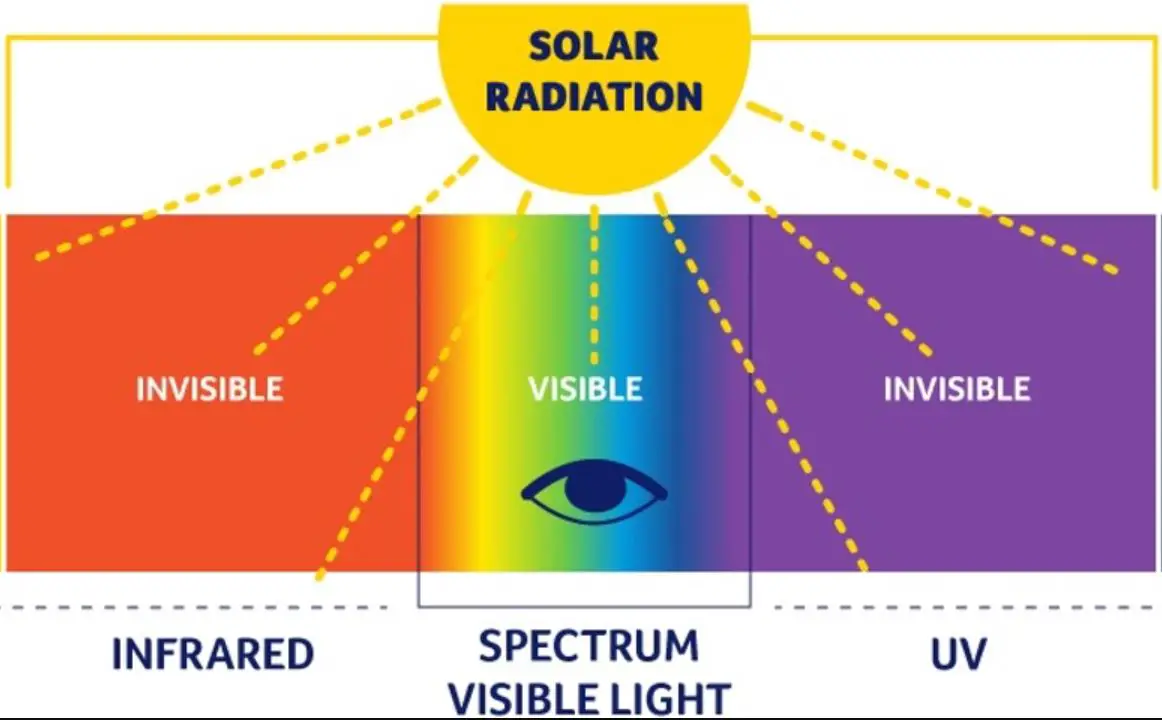
To protect ourselves from the damaging effects of UV radiation, it is important to understand and monitor the UV Index. By checking the index regularly, we can make informed decisions about our outdoor activities and take appropriate precautions.
These precautions may include seeking shade during peak UV hours, wearing protective clothing, applying sunscreen with a high sun protection factor (SPF), and wearing sunglasses blocking UVA and UVB rays.
Remember, keeping an eye on the UV Index can help us enjoy the outdoors safely while minimizing the risks associated with prolonged sun exposure.
How The UV Index is Measured
The UV Index is vital in gauging the intensity of ultraviolet (UV) radiation from the sun, providing us with valuable information about potential sunburn risks. But how exactly is this index determined? Let’s delve into the fascinating world of UV measurement.
To calculate the UV Index, scientists employ a sophisticated device called a spectroradiometer. This instrument measures solar spectral irradiance, which is sunlight’s radiant power at different wavelengths. By analyzing the solar spectrum, the spectroradiometer determines the intensity of UV radiation.
The Erythemal Action Spectrum plays a significant role in the measurement process. This spectrum represents the skin’s sensitivity to UV radiation at various wavelengths and forms the foundation of UV Index calculations. It accounts for both short-wavelength UVB and long-wavelength UVA radiation, ensuring a comprehensive assessment of the potential harm to human skin.
Additionally, the UV Index considers several factors, including the sun’s angle, cloud cover, ozone layer thickness, and altitude. These elements influence the amount of UV radiation that reaches the Earth’s surface and affect the index value.
Once all the necessary data is gathered and analyzed, the UV Index is presented on a scale of 0 to 11 or higher. Each value corresponds to a specific level of risk, with higher numbers indicating increased potential for sunburn and skin damage.
By understanding the intricate process of how the UV Index is measured, we can appreciate the scientific precision behind this essential tool. With this knowledge, we can make informed decisions about sun protection, ensuring we enjoy the great outdoors while safeguarding our skin’s health.
UV Index Scale
The UV Index Scale is a valuable tool for assessing the intensity of the sun’s ultraviolet (UV) radiation, helping us understand potential risks to our skin and eyes. Understanding this scale enables us to make informed decisions about sun protection measures.
Let’s explore the intricacies of the UV Index Scale.
The scale is a numerical representation that ranges from 0 to 11 or higher, with each value corresponding to a specific level of UV radiation exposure. It is designed to provide a standardized measurement, enabling individuals to gauge the potential risks associated with sun exposure based on location and time.
At the lower end of the scale, values between 0 and 2 indicate low UV radiation levels. This range implies a minimal risk of sunburn, but it is still essential to practice sun protection, especially for individuals with sensitive skin.
Values between 3 and 5 fall into the moderate range. Moderate UV levels imply an increased risk of sunburn, and it is crucial to take appropriate precautions such as wearing sunscreen, protective clothing, and sunglasses.
Moving up the scale, values between 6 and 7 indicate high levels of UV radiation. During these conditions, the risk of sunburn is significantly elevated. It is advisable to seek shade during peak UV hours, apply sunscreen with a high sun protection factor (SPF), and limit sun exposure.
Values of 8 or higher represent very high to extreme UV levels. These conditions pose a severe risk of sunburn and other adverse effects. Extra precautions should be taken, such as minimizing outdoor activities during peak UV hours, using broad-spectrum sunscreen, and wearing protective clothing.
By understanding the UV Index Scale, we can better protect ourselves from the potential harm of UV radiation. Regularly checking the index and adjusting our sun protection measures allows us to enjoy the outdoors safely while safeguarding our skin’s health.
The Impacts of UV Radiation on Human Health
UV radiation from the sun is a powerful force that has both positive and negative effects on human health. While it plays a crucial role in producing vitamin D and contributes to our overall well-being, excessive exposure to UV radiation can have detrimental consequences.
Let’s explore the impacts of UV radiation on human health in more detail.
1. Sunburn and Skin Damage
UVB radiation is primarily responsible for causing sunburn. When our skin is exposed to excessive UVB rays, it can lead to painful redness, blistering, and peeling. Sunburn causes immediate discomfort and increases the risk of skin cancer in the long run. Moreover, repeated sunburns can accelerate skin aging, resulting in wrinkles, age spots, and a loss of skin elasticity.
2. Skin Cancer
Prolonged exposure to UV radiation is a major risk factor for developing skin cancer. Both UVA and UVB rays can damage the DNA in skin cells, causing mutations that can lead to the formation of cancerous cells. The most common types of skin cancer are basal cell carcinoma, squamous cell carcinoma, and melanoma. Melanoma, in particular, is a highly aggressive form of skin cancer that can spread to other parts of the body if not detected and treated early.
3. Eye Damage
The eyes are also susceptible to the harmful effects of UV radiation. Prolonged exposure to UVA and UVB rays can cause various eye conditions, including cataracts, photokeratitis (a painful eye inflammation similar to sunburn), and macular degeneration. These conditions can lead to vision loss and, in severe cases, blindness.
4. Weakening of the Immune System
Excessive exposure to UV radiation can weaken the immune system. UV rays suppress immune responses, making individuals more susceptible to viral, bacterial, and fungal infections. This weakened immune system response can also interfere with the body’s ability to detect and eliminate cancerous cells, further increasing the risk of skin cancer.
5. Vitamin D Production
On the positive side, UV radiation is essential for producing vitamin D in our bodies. When UVB rays penetrate the skin, they trigger a process that converts a cholesterol compound in our skin cells into vitamin D.
Vitamin D is crucial in maintaining strong bones and teeth, regulating the immune system, and supporting overall health. However, it’s important to balance obtaining adequate vitamin D levels and protecting ourselves from excessive UV radiation.
6. Photodermatoses
Some individuals are particularly sensitive to UV radiation and may develop photodermatoses—skin conditions characterized by abnormal reactions to sunlight.
These conditions include polymorphic light eruption, solar urticaria, and actinic prurigo. Symptoms can range from mild skin rashes to severe itching, swelling, and pain upon sun exposure.
7. Precautions and Sun Protection
To minimize the impacts of UV radiation on human health, it is crucial to adopt effective sun protection measures.
These include:-
- Seeking shade during peak UV hours, usually between 10 am and 4 pm, when the sun’s rays are the strongest.
- Wearing protective clothing, such as wide-brimmed hats, long-sleeved shirts, and pants, to shield the skin from direct sunlight.
- Applying broad-spectrum sunscreen with a high sun protection factor (SPF) to exposed skin, including the face, neck, arms, and legs.
- Sunglasses that provide 100% UV protection to protect the eyes from harmful UV rays.
- Limiting time spent in direct sunlight, especially during periods of high UV intensity.
- Being mindful of reflective surfaces such as water, sand, and snow, can increase UV exposure.
- Regularly checking the UV Index to assess the level of UV radiation and adjust sun protection measures accordingly.
- Avoid using tanning beds and sunlamps, as they emit artificial UV radiation that can be equally harmful to the skin.
While UV radiation has benefits, such as vitamin D production, it is essential to be aware of its potential impacts on human health. Sunburn, skin cancer, eye damage, immune system suppression, and various skin conditions are risks associated with excessive UV exposure.
By taking proactive steps to protect ourselves from UV radiation, such as seeking shade, wearing protective clothing, and using sunscreen, we can enjoy the outdoors while minimizing the potential harm to our health. Remember, sun safety goes a long way in preserving our well-being.
How To Check UV Index
Now that you know what the UV index is, we can now find out how to check the UV index.
Luckily you don’t need to carry around a heavy meter to measure for UV radiation where you go. You can find the UV Index for your location with your phone or smartwatch. I will now proceed to mention different ways you can do that.
1. Apple Weather App
Your iPad and iPhones make it easy to check the UV Index using their Weather App. The app comes preinstalled on devices using iOS.
Open your Weather app to your current location and scroll to the bottom of the screen. You will find the UV index for your current location.
2. Apple Watch
Your Apple watches also come with the capability of displaying the UV index. The infographic watch face also displays the UV index, so you can know the UV index wherever you are.
3. Google Weather App
Though Android devices do not have a dedicated weather app like iOS devices, finding the UV index on Android phones and tablets is still easy. Using Google search, you can find the UV index.
The Google app has a weather section. Open Google and search for the weather. The information for your location will be presented to you. Scroll down to find the UV index.
4. Weather Channel And Weather Apps
The results you see on Apple’s weather app and Google search are usually from the weather channel. You can use the weather channel app to get the UV index.
Other dedicated weather apps on the Play Store will do a good job of telling you your UV index wherever you are.
5. Receive EPA Alerts
The EPA is a good source for all information related to the weather and environment. You can sign up to receive all kinds of updates from them.
Note that this is available only for people in the U.S., but for other countries, they have similar governing bodies. Also, note that you may not receive updates during government shutdowns.
To signup to receive UV updates from the EPA, follow these steps:
Go to the Enviroflash UV index forecast page
Type your email in the “Email address” box
Choose when to receive alerts. For instance, you can choose to be alerted only when the UV Index is high (6 and above)
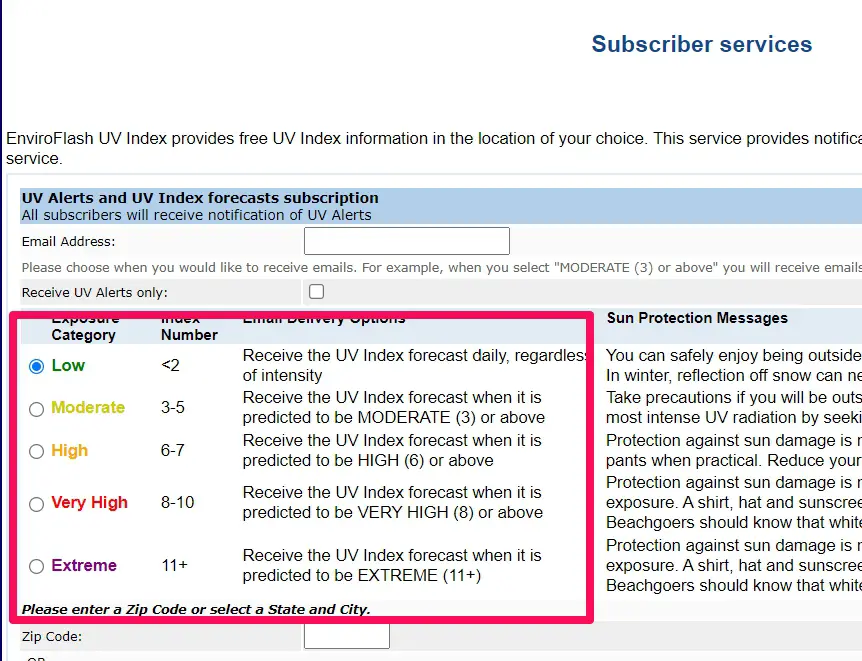
Click subscribe
6. Use Dedicated UV Apps
Though weather apps do a good job of telling you what the UV index is, there are dedicated UV apps that take it to the next level.
Dedicated UV apps can send notifications to you. You can also receive information fine-tuned to your skin type.
One app I would recommend is UVLens. After you have inspired your location, you will see an easy-to-read dial showing the UV index for your current location. You can turn the dial to see the Index at other times of the day.
Tap the “My Skin” tab to get tailored information for your skin type. You will be asked your skin color, hair color, and eye color and with that information, the app will tell you how long you can stay under the sun before you receive a sunburn.
Tap the sunscreen bottle to see how long you will last before receiving sunburns if you have applied sunscreen. You can also get reminders on when to reapply sunscreen.
Practical Tips for UV Protection
Sunshine is a wonderful source of energy and vitamin D, but it’s important to be mindful of the potential harm caused by UV radiation.
Protecting yourself from excessive sun exposure is crucial for maintaining healthy skin and reducing the risk of sunburn, premature aging, and skin cancer.
Here are some practical tips to help you effectively safeguard against UV radiation:
1. Seek Shade During Peak Hours
The sun’s rays are strongest between 10 am and 4 pm, so it’s advisable to seek shade during this period. When outdoors, look for sheltered areas such as trees, umbrellas, or canopies that protect from direct sunlight. Minimizing exposure during peak hours can significantly reduce the risk of UV damage to your skin.
2. Wear Protective Clothing
Clothing is a physical barrier between your skin and the sun’s harmful rays. When planning outdoor activities, choose clothing that covers as much skin as possible.
Opt for loose-fitting, long-sleeved shirts and long pants or skirts made from tightly woven fabrics. Darker colors and tightly woven materials provide better protection by blocking more UV radiation.
Additionally, consider wearing a wide-brimmed hat that shades your face, ears, and neck. Choose a hat with a brim at least three inches wide for maximum protection.
Don’t forget to protect your eyes by wearing sunglasses with UV-blocking lenses. Look for sunglasses with 100% UVA and UVB protection to shield your eyes from harmful radiation.
3. Apply Broad-Spectrum Sunscreen
A sunscreen is an indispensable tool for UV protection. When selecting a sunscreen, opt for a broad-spectrum formula that protects against UVA and UVB rays.
Look for products with an SPF (Sun Protection Factor) of 30 or higher. SPF 30 sunscreen blocks around 97% of UVB rays.
Apply sunscreen generously to all exposed areas of skin, even on cloudy days, as UV radiation can penetrate clouds. Don’t forget easily overlooked areas like the back of your neck, ears, and the tops of your feet.
For extended outdoor activities, reapply sunscreen every two hours or more frequently if you’ve been sweating or swimming.
4. Be Mindful of Reflective Surfaces
Water, sand, snow, and other reflective surfaces can amplify UV radiation, increasing exposure. When near these surfaces, take extra precautions to protect yourself.
Wear protective clothing that covers your skin, apply sunscreen regularly, and wear sunglasses to shield your eyes. Be aware that even in the shade near reflective surfaces, you may still be exposed to indirect UV radiation, so it’s important to maintain appropriate protection.
5. Check the UV Index
The UV Index is a useful tool for understanding the intensity of UV radiation in your area. Before heading outdoors, check the UV Index forecast for the day. The index typically ranges from 0 to 11+, with higher values indicating greater UV intensity and potential risk.
Plan your activities accordingly based on the UV Index. When the index is high, take extra precautions and limit your time in direct sunlight, especially during peak hours. Schedule outdoor activities for early morning or late afternoon when the sun’s rays are less intense.
6. Practice Sun Safety for Children
Children have sensitive skin and are more vulnerable to the harmful effects of UV radiation. Protecting them early is essential to reduce their risk of sunburn and long-term damage.
Here are some sun safety practices for children:-
- Keep infants younger than six months out of direct sunlight.
- Dress children in protective clothing, including lightweight long-sleeved shirts, long pants, and wide-brimmed hats.
- Apply baby-friendly sunscreen with an SPF of 30 or higher to exposed skin areas. Choose a sunscreen specifically formulated for infants and young children to minimize the risk of irritation.
- Encourage children to wear sunglasses with UV protection to shield their developing eyes from harmful rays.
- Teach children the importance of seeking shade and staying hydrated when outdoors.
7. Hydrate and Stay Cool
Staying hydrated is crucial for overall health and helps maintain healthy skin. Drink fluids, especially water, to stay hydrated and regulate your body temperature. When exposed to the sun, the body can lose fluids through perspiration, so replenishing them is essential.
If you’re spending extended periods outdoors, take regular breaks in shaded areas or air-conditioned spaces to give your body a chance to cool down. This can help prevent overheating and reduce the risk of heat-related illnesses.
8. Be Sun-Smart Year-Round
UV radiation is not limited to sunny summer days. It can still reach your skin on cloudy or overcast days and during other seasons.
Therefore, practicing UV protection should be a year-round habit. Make sunscreen application and other protective measures a part of your daily routine, regardless of the weather or season.
9. Avoid Tanning Beds and Sunlamps
Artificial sources of UV radiation, such as tanning beds and sunlamps, can be equally harmful to your skin as natural sunlight. They emit UVA and UVB radiation, increasing the risk of skin damage, premature aging, and skin cancer. Avoid using tanning beds or sunlamps altogether to protect your skin’s health.
10. Get Regular Skin Check-ups
Lastly, it’s essential to be proactive about your skin’s health. Schedule regular visits with a dermatologist for comprehensive skin examinations. A dermatologist can identify any suspicious moles or skin abnormalities and provide early detection and treatment for skin cancer.
In conclusion, protecting yourself from the harmful effects of UV radiation is crucial for maintaining healthy skin and reducing the risk of sun-related damage.
By following these practical tips, you can enjoy the outdoors while minimizing exposure to UV radiation and promoting long-term skin health. Remember, sun protection is a year-round commitment, so prioritize it daily.
The Future of the UV Index and Climate Change
As our planet continues to undergo significant changes due to climate change, it is important to consider how this global phenomenon will impact various aspects of our lives. One area of concern is the UV Index and its future implications.
The UV Index is critical in assessing the intensity of ultraviolet (UV) radiation from the sun and informing us about the potential risks associated with sun exposure.
Let’s explore how climate change may influence the future of the UV Index.
1. Stratospheric Ozone Depletion
Climate change and stratospheric ozone depletion are closely interconnected. While climate change refers to the long-term alteration of global weather patterns, ozone depletion specifically relates to destroying the protective ozone layer in the Earth’s stratosphere. The ozone layer acts as a shield, absorbing a significant portion of the sun’s UV radiation.
Due to human activities, such as the release of chlorofluorocarbons (CFCs), the ozone layer has gradually thinned, increasing UV radiation reaching the Earth’s surface.
Climate change exacerbates this process by altering atmospheric circulation patterns and temperatures, which can further affect ozone depletion.
As a result, the future of the UV Index will depend on our ability to mitigate climate change and reduce harmful emissions.
2. Changing UV Intensity
Climate change has the potential to alter the intensity of UV radiation. Changes in atmospheric conditions, such as increased greenhouse gases and altered cloud cover, can influence the amount of UV radiation reaching the Earth’s surface.
Rising temperatures and changing weather patterns may lead to more frequent and intense heat waves, which can increase UV radiation levels.
Additionally, changing climatic conditions can affect the behavior of aerosols, tiny particles suspended in the atmosphere. Aerosols can scatter and absorb UV radiation, influencing its intensity and distribution.
Changes in aerosol concentrations and composition due to climate change can have significant implications for the UV Index.
3. Impact on Human Health
The future of the UV Index is intricately tied to the health of our skin and eyes. As UV radiation levels vary due to climate change, it is crucial to understand and mitigate the potential impacts on human health.
Higher UV intensity can increase the risk of sunburn, skin aging, and skin cancer. Changes in UV levels may also affect the development and severity of conditions such as vitiligo, a skin disorder characterized by loss of pigmentation. Furthermore, altered UV radiation can impact our bodies’ biosynthesis of vitamin D.
Vitamin D is crucial for various physiological processes, including bone health, immune function, and mental well-being. Changes in UV levels may disrupt the delicate balance between vitamin D synthesis and UV exposure, potentially affecting public health.
4. Monitoring and Adaptation
To prepare for the future of the UV Index, it is essential to enhance monitoring and adaptation strategies. Accurate and up-to-date measurements of UV radiation are crucial for assessing the risks associated with sun exposure.
Advancements in technology and satellite-based observations have improved our ability to monitor UV radiation levels globally. These advancements enable us to develop more precise UV forecasts and provide timely information to the public.
Moreover, effective adaptation measures are vital for minimizing the negative impacts of changing UV levels. Public health campaigns, education initiatives, and increased awareness about sun safety can help individuals protect themselves from excessive UV radiation.
This includes wearing protective clothing, sunscreen, seeking shade during peak hours, and sunglasses that provide adequate UV protection.
5. Collaboration and Policy Changes
Addressing the future of the UV Index and its connection to climate change requires collaborative efforts at various levels. Governments, policymakers, scientists, and the general public must work together to reduce greenhouse gas emissions, mitigate climate change, and protect the ozone layer.
International agreements, such as the Montreal Protocol, have demonstrated the effectiveness of global collaboration in tackling ozone depletion and reducing the production and consumption of ozone-depleting substances.
Continued support for research and innovation is crucial for developing sustainable practices and technologies that can protect the ozone layer and reduce UV radiation risks.
Implementing and enforcing regulations to reduce emissions from industrial processes, transportation, and other human activities are essential in mitigating climate change and preserving the integrity of the UV Index.
In conclusion, the future of the UV Index is closely linked to the impacts of climate change and stratospheric ozone depletion.
Changes in atmospheric conditions and UV radiation levels can significantly affect human health, including an increased risk of sunburn, skin aging, and skin cancer. Monitoring UV radiation, promoting sun safety practices, and fostering collaboration and policy changes are key to addressing the future challenges posed by changing UV intensity.
By taking proactive steps to mitigate climate change and protect ourselves from excessive UV radiation, we can strive towards a future where the UV Index remains a valuable tool for promoting public health and well-being.
📗FAQ’s
What level of UV Index is safe?
The level of UV Index considered safe varies, but generally, a UV Index of 1 to 2 is considered low and poses a minimal risk of harm.
What UV Index should you avoid?
It’s advisable to avoid prolonged sun exposure when the UV Index is high, typically 8 or above, as it indicates intense UV radiation.
What UV Index is high for tanning?
A UV Index of 6 or higher is generally considered high for tanning, as it indicates strong UV radiation that can lead to sunburn and skin damage.
What does the UV Index mean?
The UV Index is a measurement that indicates the intensity of UV radiation from the sun at a particular location and time. It helps assess the potential risks associated with sun exposure.
What is the highest UV ever recorded?
The highest UV Index ever recorded was reported in Bolivia, reaching a staggering level of 43.3 due to the country’s high elevation and proximity to the equator.
Which city has the highest UV Index?
The city of La Paz, Bolivia experiences some of the highest UV Index values in the world, primarily due to its high elevation and proximity to the equator.
Can you get sunburned in the shade?
Although seeking shade reduces direct exposure to UV radiation, it’s important to note that indirect UV rays can still reach shaded areas, resulting in potential sunburn.
Should I wear sunscreen if the UV index is 1?
While a UV Index of 1 indicates low UV radiation, wearing sunscreen is advisable to protect your skin from cumulative UV exposure and maintain healthy sun-safe habits.
Can you tan in 0 UV Index?
Tanning is unlikely in a 0 UV Index environment, as it suggests minimal to no UV radiation, which is necessary for the skin to produce melanin and darken.
Can you still tan with sunscreen on?
Sunscreen protects by blocking or absorbing UV rays, which can hinder tanning. While you may still develop a tan, unprotected skin will likely be less intense.
Does sunscreen stop tanning?
Sunscreen acts as a protective barrier and reduces the skin’s exposure to UV radiation, which can diminish the intensity of a tan. However, it helps prevent sunburn and long-term skin damage.
Can you get vitamin D from the sun after 4 pm?
Yes, getting vitamin D from the sun after 4 pm is possible. However, the body’s ability to produce vitamin D depends on various factors, including geographical location, skin type, and the sun’s angle.
Which country has the lowest UV Index?
Nordic countries such as Norway, Sweden, and Finland typically have lower UV Index values due to their high latitudes and shorter periods of intense sunlight.
What states have the highest UV Index?
States with high UV Index levels include Arizona, Texas, Nevada, and Florida, which experience significant sun exposure and have a higher risk of UV-related health issues.
Is 100% UV Protection possible?
While no product can offer 100% UV protection, sunglasses labeled as providing 100% can effectively block most UV radiation that reaches the eyes.
What is the highest UV level in the US?
The highest UV levels in the United States are generally observed in locations closer to the equator, such as Hawaii and Southern California.
Where in the US is the UV lowest?
States in the northern US, such as Alaska and Washington, tend to have lower UV Index values due to their higher latitudes.
What month is the sun strongest?
The sun is typically strongest during the summer months, particularly between June and August, when the Earth is tilted towards the sun in the Northern Hemisphere.
Is Florida sun stronger?
Florida’s proximity to the equator and relatively sunny climate contribute to a higher UV Index than many other states. Therefore, the Florida sun can be considered relatively stronger.
Do you sunburn faster in water?
Yes, being in water can increase sunburn risk as water can reflect UV radiation, intensifying exposure. Additionally, water provides less protection against UV rays compared to dry surfaces.
What color to wear to not look sunburned?
Light-colored and loose-fitting clothing with a tight weave offers better protection against UV radiation and helps prevent the appearance of sunburn.
What colors should you avoid when sunburned?
When sunburned, it’s best to avoid wearing dark colors as they absorb more sunlight and heat, which can exacerbate discomfort and potentially prolong the healing process.
What is the lowest UV Index to tan?
Tanning can occur at UV Index levels as low as 3, but it’s important to remember that any degree of tanning indicates skin damage and an increased risk of future problems.
Do Italians wear sunscreen?
Yes, Italians, like many other populations, are increasingly aware of the importance of sun protection. Sunscreen usage is encouraged to prevent sunburn, skin aging, and skin cancer.
What UV Index is good for vitamin D?
A UV Index of 3 or higher is generally considered adequate to optimize vitamin D synthesis in the skin. However, individual factors such as skin type and sun exposure duration also play a role.
Can you tan with clouds?
Yes, you can still tan with clouds present. While clouds may reduce the intensity of UV radiation, a significant amount can still penetrate and result in tanning and potential sunburn.
Can you tan through a window?
Standard windows typically block UVB radiation, responsible for vitamin D synthesis. However, UVA rays can still penetrate glass and contribute to tanning and skin damage.
Does baby oil help you tan?
Applying baby oil or other oils does not enhance tanning. Oil can intensify UV radiation and increase the risk of sunburn and skin damage.
How do you not get sunburned but tan?
The best approach is to practice responsible sun exposure by gradually increasing exposure time, using sunscreen, seeking shade during peak hours, and wearing protective clothing.
What is the safest way to tan?
The safest way to tan is to do it gradually and responsibly. Start with short exposure periods, use a broad-spectrum sunscreen, seek shade when necessary, and prioritize skin health.
How can I speed up my tan?
It’s important to note that no foolproof method to speed up tanning safely exists. However, spending time in the sun during peak hours, using appropriate sun protection, and having a balanced vitamin-rich diet can support overall skin health.
Do sunburns turn into a tan?
Sunburns are a sign of skin damage, and the skin’s response is to increase melanin production as a protective measure. However, sunburns do not turn into a tan but indicate skin injury.
How long does a tan last?
The duration of a tan varies depending on various factors, including skin type, sun exposure, and individual skin cell turnover. Generally, a tan can last a few weeks to a few months.
Is SPF 30 or 50 better for tanning?
Higher SPF numbers offer greater protection against UV radiation, so SPF 50 provides more sunburn protection and helps minimize skin damage compared to SPF 30.
Final Thoughts
The UV Index is more than just a number; it’s a tool that empowers you to take control of your health and make informed decisions about sun protection.
Throughout this article, we’ve delved into understanding what the UV Index is, how it’s measured, its impacts on human health, and how we can use it to our advantage.
Whether you’re planning a day at the beach, running, or gardening, the UV Index provides a crucial guideline to ensure you’re not putting your skin and health at risk.
While it might seem trivial to check it regularly at first, making this a part of your daily routine could significantly impact your long-term well-being.
Just as we look at the weather forecast to dress accordingly, we must also pay attention to the UV Index to protect our skin from unnecessary and harmful UV exposure.
With climate change influencing UV radiation levels, the importance of the UV Index cannot be understated. It’s about time we adapt and make sun safety a priority.
Remember, we can still enjoy the sun – it’s about doing so responsibly and knowledgeably.
Keep this guide handy and let the UV Index be your trusted companion as you navigate the UV-dense world.

























